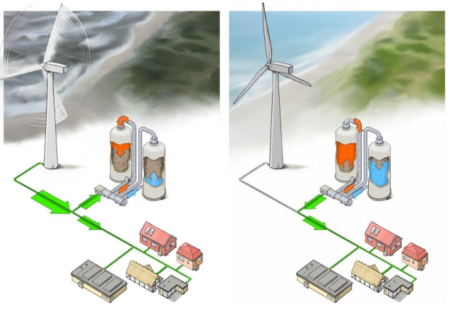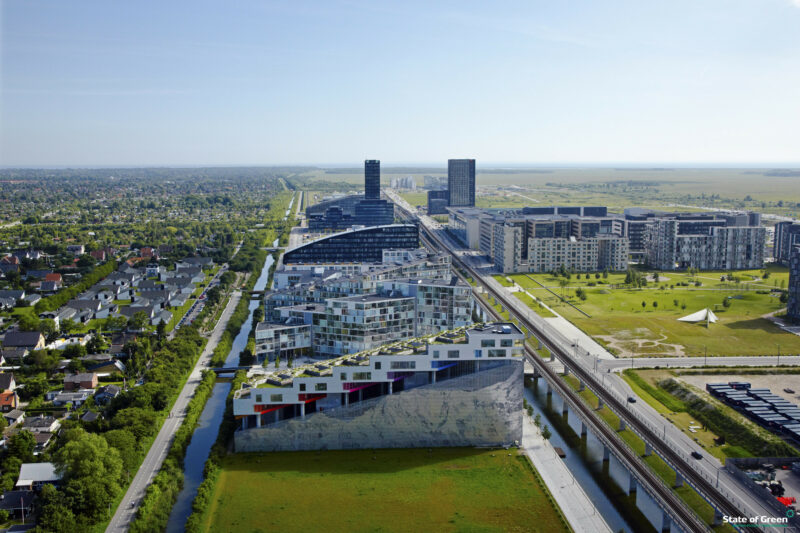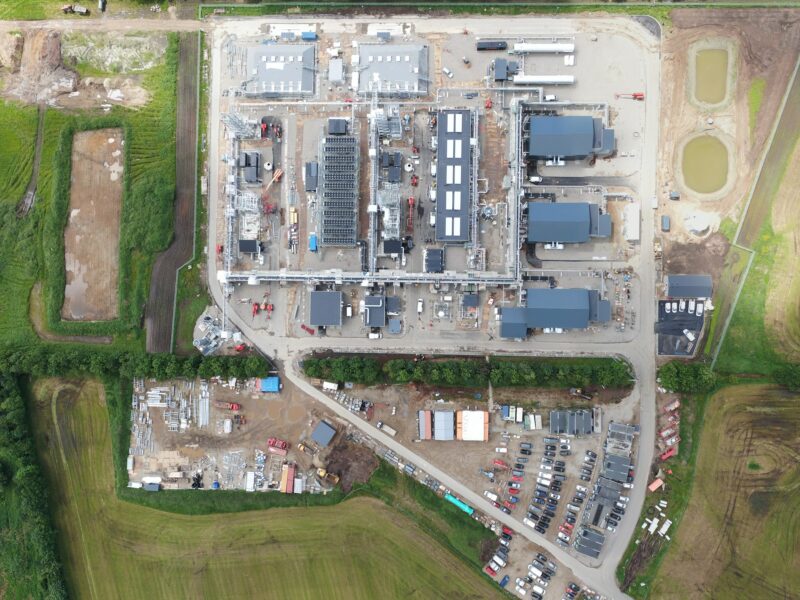News
Smart energy systems
Hot rock energy storage will soon be a reality in Denmark’s electricity grid


One of the greatest barriers to the green energy transition is storing surplus power generation from renewables. Now, the energy and fibre-optic group Andel and Stiesdal Storage Technologies mean to fix that issue by installing a new rock-based electrothermal energy storage facility at one of Denmark’s southern isles.
Rødby at Lolland can look forward to becoming the home of a new energy storage facility, which has the potential to remove obstacle of storage en route to a future based on 100 per cent green electricity supply. The facility will be able to store electricity from renewables at times when the wind blows and the sun shines, for later use. The new storage system, called GridScale, stores energy in large tanks filled with crushed stone.
”As a society, we are facing an absolutely crucial and comprehensive task in reducing climate change. Seen in the light of the most recent IPCC climate report, the task has not diminished. At Andel, we want to be part of the solution and lead the way by investing in the green transition, for instance through the extension of the charging infrastructure as well as using our knowledge to develop new green technologies. Therefore, I am also very happy that we have now found the perfect geographical location and can speed up the construction of our hot rock energy storage so that we get one step closer to storing power from renewable energy sources”, CEO at Andel Jesper Hjulmand says.
Over the past months, Andel and Stiesdal Storage Technologies have evaluated different geographical candidates for the location of the first GridScale storage. Eventually, The Southern Danish city of was the ideal choice:
”We have prioritised that the storage facility is built and tested where its owners, the cooperative members, live. Furthermore, it must be a location in which we can already see the opportunities and challenges that are part of the electrification of society and the increasing volumes of renewable energy from for instance wind turbines. And there must also be space to expand the storage facility, and perhaps also test and develop new storage methods. Based on these criteria, Lolland is perfect,” says Jesper Hjulmand.
”For us, Rødby is a great location, both in relation to its neighbouring district heating plant, Rødby Varmeværk, as well as the regional supply situation where Lolland has a large surplus of renewable energy. It is precisely in such a context that our storage technology can make a difference and contribute to a far more extensive integration of power from sun and wind than what has been feasible up till now. The market for storing electricity from renewables is huge, and we expect that GridScale’s combination of a long discharge cycle and low cost will attract international interest,” CEO of Stiesdal Storage Technologies Peder Riis Nickelsen says.
The neighbouring district heating plant, Rødby Varmeværk, welcomes the location decision and sees it as an important national initiative very much in line with their vision for the future local supply of heating.
The mayor of Lolland Municipality Holger Schou Rasmussen says:
”It is fantastic that Andel and Stiesdal Storage Technologies become part of the energy cluster on Lolland with their new hot stone energy storage, and I see it as a result of decades of work with renewable energy on Lolland. We are often asked why more green power should be produced on Lolland when we are already self-sufficient, and the hot rock energy storage is part of the answer. For Lolland Municipality it is vital that we contribute to the green transition in Denmark, and we can also see that access to abundant green energy creates local development and attracts new businesses. The utilisation of excess power through storage or production of gas, hydrogen and ethanol will be an important industry in the future.”
Related solution: Innovative energy storage: 600-degree hot stones are used to store green electric power
A solution to a very topical issue
At Lolland-Falster, the production of renewable energy is so large that sometimes the energy producing facilities must be temporarily shut off as consumption does not match production.
”Here, we have a clear-cut example of one of the challenges included in the green transition. There is an abundance of renewable energy, but it cannot be transported off Lolland-Falster without very large investments in the electrical infrastructure. Taken alone, the offshore wind turbines produce twice as much power as is used locally. Therefore, you must use the electricity for something else, or you must be able to store it,” Jesper Hjulmand says.
The GridScale storage facility at Rødby will be a demonstration facility intended for at least 10-15 years use. The construction of the facility will begin as soon as the required planning permissions have been obtained. Andel expects construction to start in the fall with the facility ready to receive energy from sun and wind in roughly a year from now.
Andel and Stiesdal Storage Systems expect that GridScale facilities can be placed at solar farms, offshore wind farms, substations as well as industrial facilities.
Electricity from hot rocks
The potential of storing energy in stone has been documented in two Danish innovation projects performed at DTU Risø by Andel and Stiesdal Storage Technologies, respectively.
The projects confirmed that stones can withstand repeated heating, that it is possible to re-extract the energy from the storage at a constant temperature, and that a large-scale storage facility can contribute to the solution of challenges in the electricity system. Through this, the level of knowledge on large-scale storage facilities was elevated from an idea into something that is realistic and technically feasible.
Related news: New DTU whitebook: Energy storage technologies in a Danish and international perspective
How it works
The energy storage, on which Andel and Stiesdal are working, contains crushed stones the size of peas stored in insulated steel tanks. When there is excess supply of electricity in the electricity grid, the storage is charged using a specially designed heat pump system, which moves heat energy from one set of tanks to another.
The stones get colder in the tanks, from which the energy is taken, while they get a lot hotter in the tanks that receive the heat, as hot as approx. 600 degrees C.
The heat can be stored in the stones for many days, and when more electricity is needed in the grid, the heat energy is returned from the hot tanks to the cold tanks using a turbine, which produces the electricity. It is a highly efficient solution due to a low loss of energy.
You should consider reading
solutions
Combined heat and power production
+6
CopenHill: The story of the iconic waste-to-energy plant
20 November 2024publications
Combined heat and power production
+9
















